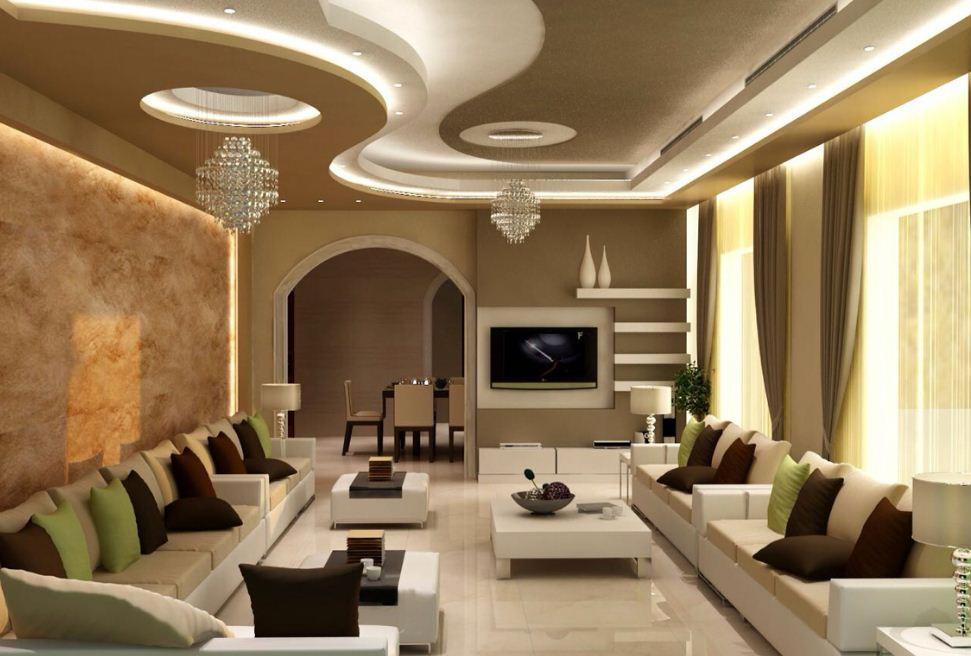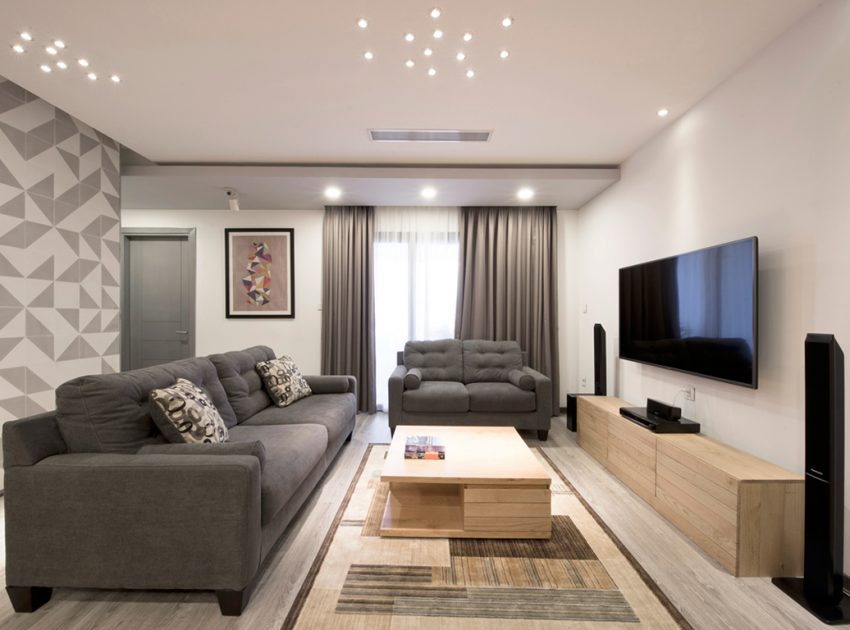
Hall Interior Design
The hall interior design is the heart of any home, serving as the central space for family gatherings, relaxation, and entertainment. A well-designed hall interior not only enhances aesthetics but also ensures functionality and comfort. Whether you prefer a modern, traditional, or contemporary look, careful planning can turn your hall into a stylish and inviting space. Elevate your hall with expert interior design insights, blending style and functionality seamlessly. Whether your taste leans towards modern, traditional, or luxurious, well-planned design elements enhance both beauty and comfort.
- A minimalistic hall can be stylish and efficient with carefully chosen designs and materials.
- Mount your TV on the wall over an unattached cabinet for a clean sleek look.

1. Choosing the Right Color Palette
The color scheme sets the mood of your hall. Light and neutral shades like white, beige, and pastels create an open and airy feel, while bold colors like navy blue, emerald green, and deep grey add a touch of luxury. Consider accent walls or textured wallpapers to add character to the space. Transform your hall interior design into a stylish and functional space with expert interior design tips. From choosing the right color palette and furniture arrangement to lighting, décor, and smart technology integration, create an inviting and elegant ambiance. Whether you prefer a modern, traditional, or luxurious look, thoughtful design choices can enhance both aesthetics and comfort.
2. Furniture Arrangement and Selection
Furniture plays a crucial role in hall interior design. Opt for pieces that balance comfort and style:
Sofas and Seating: Choose plush, ergonomic sofas that complement the room’s dimensions.
Coffee Tables: A well-designed coffee table can be a focal point.
Storage Units: Incorporate cabinets or wall-mounted shelves to maintain a clutter-free environment.
Multi-functional Furniture: Ideal for small spaces, such as sofa-cum-beds or nesting tables.
3. Lighting to Set the Ambience
Lighting can dramatically change the look and feel of a hall interior design Use a combination of different lighting types:
Ambient Lighting: Ceiling lights, chandeliers, or recessed lighting create overall illumination.
Task Lighting: Table lamps, floor lamps, or pendant lights enhance functionality.
Accent Lighting: Spotlights or LED strips highlight architectural features and décor elements.
4. Flooring and Rugs
Flooring should be durable yet stylish. Popular choices include:
Wooden Flooring: Brings warmth and elegance.
Marble or Tiles: Adds a touch of luxury and is easy to maintain.
Carpets and Rugs: Define seating areas and add a cozy feel.
5. Decorative Elements and Wall Décor
Enhance the visual appeal with decorative elements:
Wall Art: Paintings, murals, or framed prints personalize the space.
Mirrors: Strategically placed mirrors create an illusion of a larger hall.
Indoor Plants: Add freshness and a natural touch.
Showpieces and Accessories: Elegant sculptures, vases, or decorative bowls bring sophistication.
6. Ceiling Design for a Grand Look
False ceilings with recessed lighting or wooden paneling can add depth and elegance to your hall interior design. Consider cove lighting for a modern touch.
7. Smart Technology Integration
Modern hall designs often incorporate smart technology:
Automated Lighting: Adjustable brightness with voice or app control.
Home Theatre System: For a cinematic experience.
Smart Temperature Control: Ensures comfort throughout the year.
Conclusion
A well-planned hall interior design enhances both aesthetics and functionality. By choosing the right colors, furniture, lighting, and décor, you can create a stunning and inviting space for your home. Whether you prefer a minimalist style or a luxurious setting, thoughtful design choices will transform your hall into the perfect gathering spot.
If you need expert guidance in designing your hall, contact Narendra Kitchens and Interior Design for personalized interior solutions!
1. Choose a Neutral Color Palette
Opt for light and neutral shades like white, beige, or pastel tones to make the space look larger and brighter. You can add a pop of color through cushions, rugs, or wall art.
2. Functional and Minimal Furniture
Keep the furniture hall interior design minimal and practical. A sleek sofa, a coffee table, and a few accent chairs can make the space comfortable without cluttering it. If space allows, add a console table with decorative pieces.
3. Smart Lighting
Use a combination of ambient and accent lighting. Ceiling lights or pendant lamps provide overall illumination, while floor or table lamps add warmth and coziness.
4. Wall Décor
Decorate walls with framed artwork, mirrors, or subtle wallpaper. Mirrors help create an illusion of a larger space by reflecting light.
5. Elegant Flooring
Choose wooden flooring, tiles, or rugs to define the space. A stylish rug can add warmth and complement the overall décor.
6. Indoor Plants
Add greenery with potted plants or hanging planters. Indoor plants bring freshness and a natural touch to the hall.
7. Declutter and Organize
Keep the space neat by using storage solutions like floating shelves or multipurpose furniture. A well-organized hall looks more appealing and spacious.
With these simple yet effective ideas, you can create a beautiful and inviting hall without overcomplicating the design.
Modern Theme
- Clean lines, minimalistic furniture, and neutral color palettes.
- Use of glass, metal, and sleek surfaces.
- Focuses on open spaces and natural light.
2. Contemporary Theme
- A blend of modern and trendy elements.
- Features bold colors, textures, and statement furniture.
- Smart technology integration for convenience.
3. Traditional Theme
- Rich wooden furniture, intricate carvings, and classic designs.
- Warm color tones like beige, gold, and deep reds.
- Use of chandeliers, heavy drapes, and antique pieces.
4. Minimalist Theme
- Simple, uncluttered spaces with a monochromatic palette.
- Functional furniture with a focus on open areas.
- Less is more—emphasizing quality over quantity.
5. Scandinavian Theme
- Light and airy spaces with white and pastel colors.
- Wooden textures, cozy fabrics, and minimal décor.
- Functional and practical design with an emphasis on comfort.


0 comments